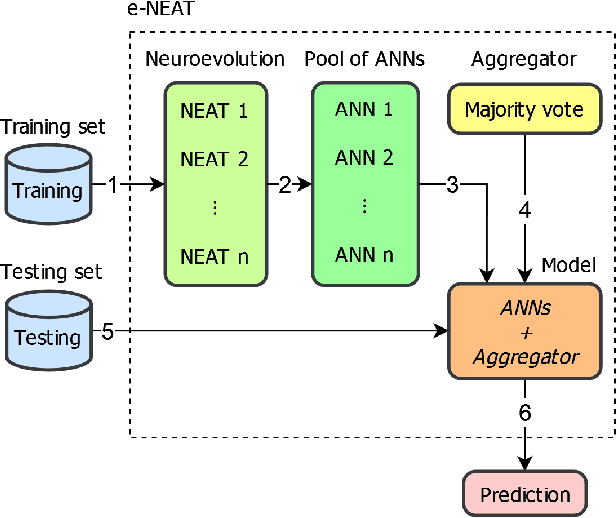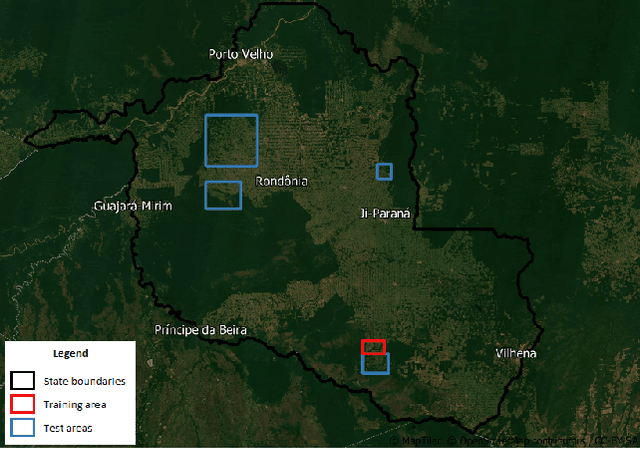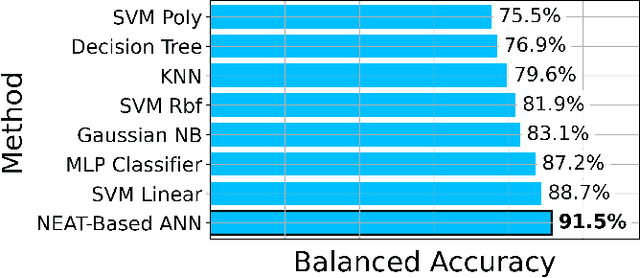Alvaro Fazenda
A Framework of Landsat-8 Band Selection based on UMDA for Deforestation Detection
Nov 17, 2023Abstract:The conservation of tropical forests is a current subject of social and ecological relevance due to their crucial role in the global ecosystem. Unfortunately, millions of hectares are deforested and degraded each year. Therefore, government or private initiatives are needed for monitoring tropical forests. In this sense, this work proposes a novel framework, which uses of distribution estimation algorithm (UMDA) to select spectral bands from Landsat-8 that yield a better representation of deforestation areas to guide a semantic segmentation architecture called DeepLabv3+. In performed experiments, it was possible to find several compositions that reach balanced accuracy superior to 90% in segment classification tasks. Furthermore, the best composition (651) found by UMDA algorithm fed the DeepLabv3+ architecture and surpassed in efficiency and effectiveness all compositions compared in this work.
Neuroevolution-based Classifiers for Deforestation Detection in Tropical Forests
Aug 23, 2022



Abstract:Tropical forests represent the home of many species on the planet for flora and fauna, retaining billions of tons of carbon footprint, promoting clouds and rain formation, implying a crucial role in the global ecosystem, besides representing the home to countless indigenous peoples. Unfortunately, millions of hectares of tropical forests are lost every year due to deforestation or degradation. To mitigate that fact, monitoring and deforestation detection programs are in use, in addition to public policies for the prevention and punishment of criminals. These monitoring/detection programs generally use remote sensing images, image processing techniques, machine learning methods, and expert photointerpretation to analyze, identify and quantify possible changes in forest cover. Several projects have proposed different computational approaches, tools, and models to efficiently identify recent deforestation areas, improving deforestation monitoring programs in tropical forests. In this sense, this paper proposes the use of pattern classifiers based on neuroevolution technique (NEAT) in tropical forest deforestation detection tasks. Furthermore, a novel framework called e-NEAT has been created and achieved classification results above $90\%$ for balanced accuracy measure in the target application using an extremely reduced and limited training set for learning the classification models. These results represent a relative gain of $6.2\%$ over the best baseline ensemble method compared in this paper
 Add to Chrome
Add to Chrome Add to Firefox
Add to Firefox Add to Edge
Add to Edge